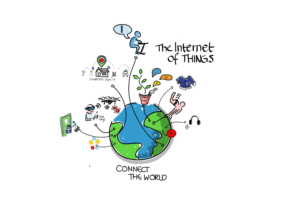What the Internet of Things Means for Everyday Consumers

The Internet of Things (IoT) is revolutionizing how we live, work, and interact with the world around us. From smart refrigerators that automatically order groceries to connected cars that provide real-time traffic updates, the possibilities are endless. This article explores what the Internet of Things means for everyday consumers, identifying the opportunities and challenges associated with this rapidly growing technology. We’ll look at the benefits and drawbacks of IoT devices, and suggest strategies for consumers to make informed decisions. This exploration will cover smart home technologies, the role of security, and the future trends within the IoT.
1. Understanding the Fundamentals of the Internet of Things
1.1 Defining the Internet of Things
The Internet of Things (IoT) refers to the network of physical objects embedded with sensors, software, and other technologies for connecting and exchanging data with other devices and systems over the internet. These objects range from everyday household appliances to industrial equipment and even wearable devices. This interconnected network allows for unprecedented levels of automation and data collection, leading to new possibilities in numerous fields, including home automation, industrial control, and even healthcare. The core principle is connecting objects, making them ‘smart’, and facilitating communication between them and the digital world.
2. The Rise of Smart Homes
2.1 Home Automation and Control
Smart home technology is a prime example of the IoT in action. By connecting various devices within the home – lights, thermostats, security systems, and appliances – users can automate tasks, improve energy efficiency, and enhance security. Imagine being able to adjust the temperature of your house remotely using your smartphone, or activating lights when you arrive home. The market for smart home devices is booming, with new products being introduced constantly. However, this convenience also raises important questions regarding data privacy and security.
2.2 Benefits and Drawbacks of Smart Home Devices
Smart home devices offer convenience and efficiency, providing automated routines that free up time and improve the quality of life. They also enhance energy efficiency by optimizing energy use, leading to substantial cost savings. But they also raise concerns about security and privacy. If a smart device is compromised, it could expose personal data or allow unauthorized access to the home environment.
3. Connected Cars and Transportation
3.1 The Evolution of Automotive Technology
The automotive industry is undergoing a significant transformation thanks to the IoT. Connected cars utilize sensors and communication technologies to provide drivers with real-time traffic updates, optimize fuel consumption, and enhance safety features. Imagine cars that can predict traffic congestion, automatically adjust to road conditions, and even warn drivers of potential hazards. The capabilities of connected vehicles are rapidly expanding, improving the driving experience and creating new avenues for entertainment and information access.
3.2 Impact on Driver Experience and Safety
These connected vehicles provide valuable insights that directly impact the driver experience. Real-time traffic information allows drivers to adjust their routes in real-time to avoid traffic jams, reducing commute times significantly. Advanced safety features, like automatic emergency braking, promise to reduce accidents, making roads safer for everyone. However, concerns about data privacy and potential security vulnerabilities remain crucial considerations.
4. The Role of Security in IoT
4.1 Data Privacy Concerns
IoT devices collect and transmit vast amounts of data, raising serious concerns about data privacy and security. The increasing reliance on connected devices creates a larger attack surface for potential hackers and cybercriminals. Security vulnerabilities in one device can expose entire networks and potentially sensitive personal information. The risk of data breaches is a major concern that needs to be addressed through robust security protocols and careful device selection.
4.2 Protecting Personal Data with IoT Devices
Many security measures can be applied to protect user data. Strong passwords and two-factor authentication are critical for safeguarding accounts. Using reputable brands and thoroughly researching the security measures in place is also paramount. Regular software updates and security patches are essential for maintaining the integrity of IoT systems.
Related Post : How Biotech Is Pushing the Boundaries of Medicine and Healthcare
5. Future Trends in IoT
5.1 Industrial IoT and Smart Cities
The impact of IoT extends beyond the home and into the industrial sector and urban planning, creating what are now called smart cities. Industrial IoT facilitates automation and data analysis in manufacturing and supply chain management. Smart cities utilize sensors and data analytics to optimize infrastructure, improve public services, and enhance the quality of life for citizens. The possibilities are vast and continuously evolving.
5.2 The Future of IoT and Consumer Impact
The future of IoT technology promises even more integration into our everyday lives. We can expect continued advancements in home automation, enhanced safety features in vehicles, and innovative applications in areas like healthcare and agriculture. However, consumers need to be vigilant about privacy concerns and choose reputable brands to ensure a secure and seamless experience.
6. Smart Appliances and the Future of Cooking
6.1 Smart Appliances and the Future of Kitchen Technology
Smart appliances offer convenience and automation within the kitchen environment. These devices include smart refrigerators that automatically order groceries, smart ovens that provide cooking recommendations, and smart dishwashers with integrated cleaning routines. This level of automation streamlines household chores and improves overall efficiency.
6.2 Enhanced Kitchen Experiences with Automation
Smart appliances offer convenience and automation within the kitchen environment. Imagine a refrigerator that automatically orders groceries when supplies run low or an oven that provides customized cooking suggestions based on ingredient availability. These devices enhance efficiency and streamline daily kitchen tasks.
7. Emerging Trends and Considerations
7.1 The Need for Responsible IoT Development
Developing IoT systems responsibly is crucial for mitigating potential security concerns and ensuring widespread adoption. Focus should be on creating systems that prioritize user privacy and security. Addressing data privacy and security concerns from the outset is critical for building trust and fostering responsible development.
7.2 Staying Informed about Future Developments
IoT technology is continuously evolving. Staying informed about the latest trends and developments in the IoT sector is essential for consumers. This involves researching emerging devices, understanding the potential applications, and staying updated on advancements in security and privacy.
8. Consumer Adoption and the Internet of Things
8.1 Motivating Consumer Adoption of IoT
Numerous factors motivate consumer adoption of IoT technologies. These factors include convenience, efficiency, and potential cost savings associated with automated systems. Ease of use and accessibility of smart home devices are key drivers.
8.2 Challenges and Concerns with IoT Technology
Despite the numerous benefits, consumers need to be aware of potential challenges associated with IoT technology. Security concerns, data privacy issues, and interoperability problems are some of the key concerns.
In conclusion, the Internet of Things (IoT) is rapidly transforming everyday life for consumers, offering convenience, efficiency, and new ways to interact with technology. From smart homes to connected cars, the opportunities are vast. By understanding the potential benefits and drawbacks, consumers can make informed decisions about adopting IoT devices and services, ensuring a seamless integration into their lifestyles. For a more in-depth understanding of specific IoT applications, consider exploring resources like [insert reputable IoT resource here] or [insert another reputable IoT resource here] . Embrace the future of connected living, and discover the amazing potential of the Internet of Things!
Share this content:













Post Comment